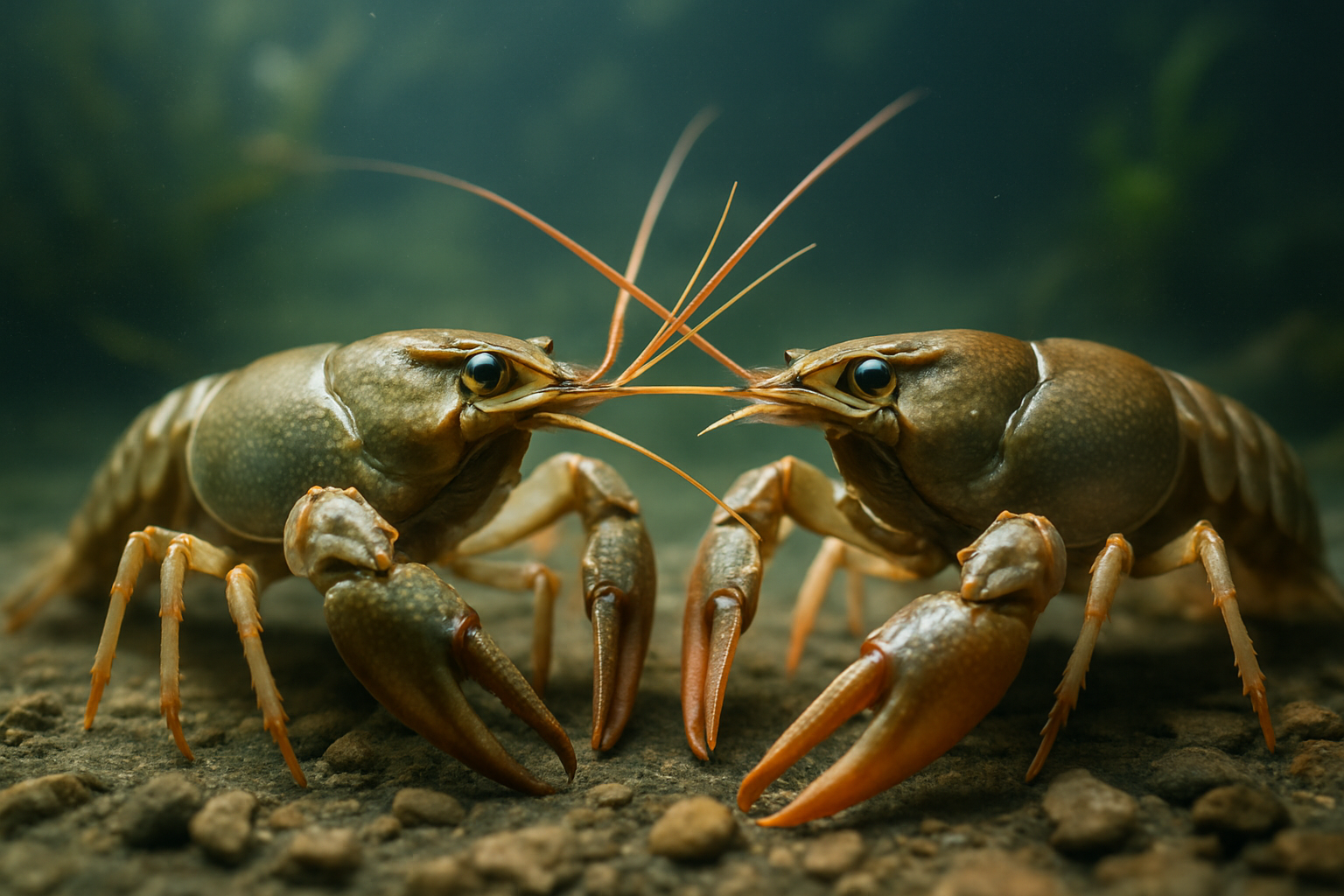Decoding the Enigmatic World of Crayfish Communication
The silent depths of freshwater ecosystems harbor a captivating secret: the intricate communication network of crayfish. These small crustaceans, often overlooked in the grand tapestry of aquatic life, possess a fascinating array of methods to convey information to their peers. From chemical signals to visual displays, crayfish have evolved a complex language that shapes their social structures, mating rituals, and survival strategies.

The Chemical Conversations of Crayfish
At the heart of crayfish communication lies a intricate system of chemical signaling. These crustaceans possess specialized glands that secrete pheromones into the water, creating an invisible network of information. Each chemical signal carries specific messages, ranging from mating availability to warnings of potential predators. The crayfish’s antennae, adorned with thousands of sensory receptors, act as highly sensitive detectors, allowing them to decipher these chemical cues with remarkable precision.
Research has shown that crayfish can distinguish between the chemical signatures of familiar and unfamiliar individuals, a skill crucial for maintaining social hierarchies and avoiding unnecessary conflicts. This chemical language also plays a vital role in reproduction, with male crayfish releasing pheromones to attract potential mates and females signaling their receptiveness to courtship.
Visual Displays: The Silent Theater of Crayfish Interactions
While chemical signaling forms the foundation of crayfish communication, visual displays add another layer of complexity to their interactions. Crayfish engage in elaborate posturing and gestures to convey dominance, submission, or aggression. The raising of claws, known as chelae displays, serves as a primary method of visual communication. A crayfish with raised claws sends a clear message of dominance or territorial defense, while lowered claws may indicate submission or a non-threatening stance.
These visual cues are particularly important in male-to-male interactions, where size and posture can determine the outcome of territorial disputes without the need for physical combat. The intensity and duration of these displays often correlate with the level of aggression or submission being conveyed, allowing crayfish to resolve conflicts efficiently and with minimal risk of injury.
Tactile Communication: The Language of Touch
In the close-quarters environment of their underwater habitats, crayfish also rely on tactile communication to gather information about their surroundings and interact with conspecifics. Their highly sensitive antennae and body hairs can detect minute changes in water pressure and movement, allowing them to navigate their environment and respond to potential threats or opportunities.
During mating rituals, tactile communication becomes particularly important. Male crayfish may gently tap or stroke females with their antennae or claws as part of the courtship process. This physical interaction not only conveys the male’s intentions but also allows both parties to assess the suitability of potential mates based on size, health, and genetic compatibility.
The Role of Acoustic Signals in Crayfish Society
While less prominent than their chemical and visual communication methods, recent studies have revealed that crayfish also produce and respond to acoustic signals. These sounds, often imperceptible to human ears, are generated by the rapid contraction of specialized muscles attached to the crayfish’s hard exoskeleton. The resulting vibrations travel through the water, potentially serving as warning signals or territorial markers.
Researchers have observed that these acoustic signals may play a role in deterring predators or alerting nearby crayfish to potential dangers. The frequency and intensity of these sounds can vary, suggesting a more nuanced form of communication than previously thought. This discovery has opened up new avenues for understanding the complexity of crayfish social interactions and their adaptation to various aquatic environments.
The Impact of Environmental Factors on Crayfish Communication
The effectiveness of crayfish communication is heavily influenced by environmental conditions. Factors such as water turbidity, temperature, and pH levels can all affect the transmission and reception of chemical signals. In polluted or disturbed habitats, the delicate balance of crayfish communication may be disrupted, leading to potential impacts on population dynamics and ecosystem health.
Climate change and habitat destruction pose significant threats to crayfish populations worldwide, with potential consequences for their communication systems. As water temperatures rise and ecosystems shift, crayfish may need to adapt their communication strategies to survive. Understanding these impacts is crucial for conservation efforts and the preservation of these important freshwater species.
Implications for Ecosystem Management and Conservation
The study of crayfish communication offers valuable insights into the complex dynamics of freshwater ecosystems. As keystone species in many aquatic habitats, crayfish play a critical role in maintaining ecological balance. Their communication systems influence everything from population distribution to predator-prey relationships, making them important indicators of overall ecosystem health.
Conservation efforts aimed at protecting crayfish populations must take into account the intricate nature of their communication systems. Preserving water quality, maintaining natural habitat structures, and mitigating the effects of invasive species are all crucial steps in ensuring the continued survival and thriving of these fascinating crustaceans.
As our understanding of crayfish communication deepens, it opens up new possibilities for ecosystem management and species conservation. By decoding the silent language of these aquatic creatures, we gain a greater appreciation for the complexity of life beneath the water’s surface and the importance of preserving these delicate underwater ecosystems for future generations.





